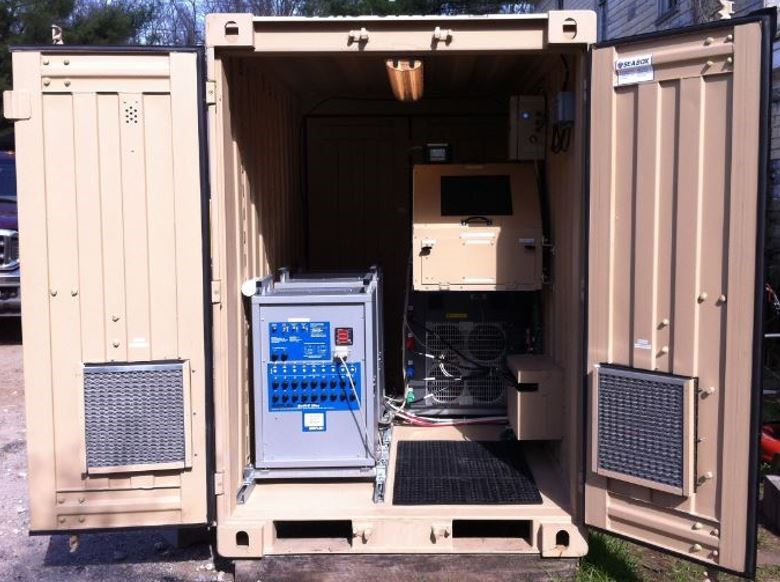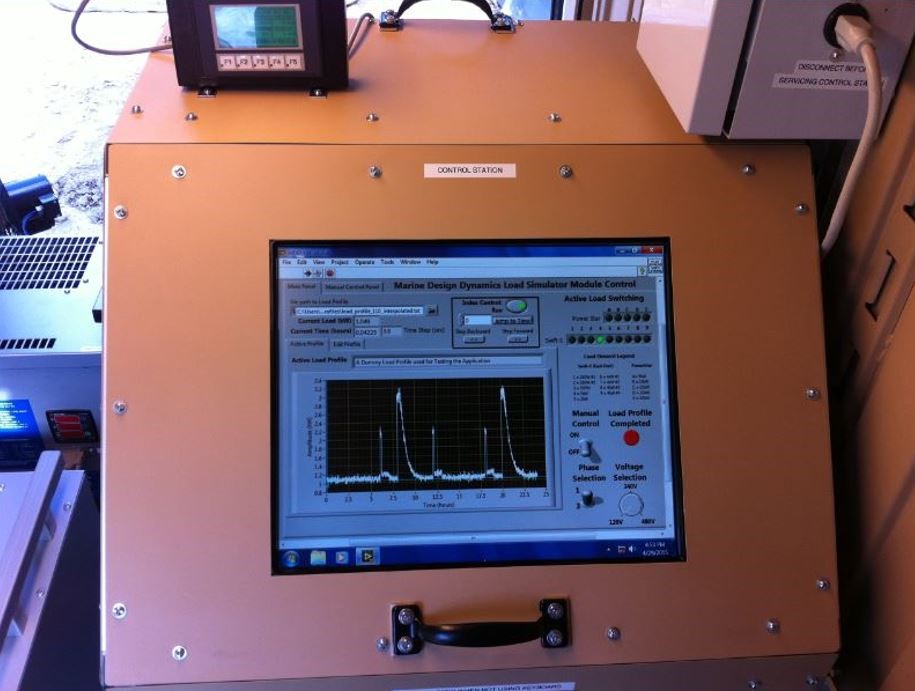Upon successful completion of a prime contract with the US Marine Corps to conduct Research and Development to improve energy efficiency of USMC Forward Operating Bases (FOB) and thereby reduce convoy logistics requirements for sustainment, MDD has been awarded an additional contract through the US Navy’s Small Business Innovative Research (SBIR) program to further develop testing and simulation methods to improve energy efficiency.
In late 2012, for the first phase of the SBIR project, MDD developed an Energy Generation, Distribution, and Consumption (EGDC) Model, which is used in the assessment of efficiency gains in the full spectrum of FOB electrical energy generation, distribution, and consumption. In the second phase of this contract, MDD has matured the EGDC model to function as a discrete, event-based simulation tool, as opposed to a wiring-based model. The Discrete Event Simulation Toolbox (DEST) is a suite of MATLAB-generated functions and scripts, referencing an extensive database of various input parameters, that enable the user to create a simulated load profile for a specific set of equipment, under various operational and environmental scenarios, typically deployed at a USMC FOB. The output of the DEST is a time-based load profile (power consumed over a specific period of time); the output of the DEST (the load profile) can be used as a control data source for an intelligent load bank system.
In 2014, a second, parallel component of Phase II, in conjunction with the development of the DEST, was the design of an integrated, smart load bank system, called the Load Simulation Module (LSM). The LSM provides a means of supplying a variable dummy load to an attached power generation system, such as USMC GenSets. The LSM consists of a Control Panel and series of load banks, whose individual load cells are automatically controlled by the Control Panel software. This is done by selecting a series of individual load elements in combinations whose sum corresponds to a DEST load profile at a given time. These individual load elements are automatically selected by the relay controls in the Control Station. The LSM is designed to test, evaluate and validate the performance of current and future power generation systems that are used in USMC FOBs. The DEST/LSM package was delivered in May 2015 to the USMC via the Aberdeen Proving Ground, MD. The EGDC Tool, DEST, and LSM work together as a powerful analytical suite to assist the Marine Corps in predicting the effects of future power generation systems in consideration of usage, logistics and cost on FOB energy efficiency.

Interior of the Load Simulation Module, showing load banks and Control Panel

LSM touchscreen Control Panel, operating under automatic control of a load profile
View other Marine Design Dynamics projects:
Carnival Cruise Lines Energy Conservation
USS Mount Whitney Assured Power Modifications
Staten Island Ferry Molinari Class Energy Conservation
MSC Engineering Services (USNS COMFORT)
Remote Water Purification System
FOB Energy and Water Conservation System
USMC Forward Operating Bases (FOB)
Multi-Mission Combat Craft
The Mobile Ocean System (MOS) Testing
Maelstrom Water Jet Pump Testing
High Volatility Fuel Module (HVF Module)
Heavy Unrep Program Management
6-PAQ MSE Support
Mobile Offshore Ship (MOS)
MSC Shipboard Energy Conservation
RO Module Phase II SBIR
T-Craft